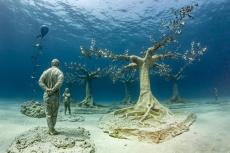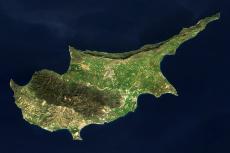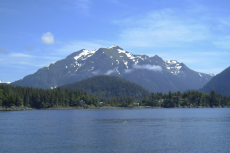On opposite sides of the planet from each another, two historic shipwrecks sit in a constant state of change. Both bear historical witness to the story of their day, yet they are very different: One is a Mediterranean cargo vessel from over 2,300 years ago, the other a Norwegian tanker that sank off the coast of New Jersey in 1964. Although they differ in nearly every way, the one key thing they share today is how divers and researchers across the globe uncover and honor their stories: the intersection of mission, art, skills and technology in a modern expedition.
Contributed by
Well, what exactly is a modern expedition? What does it entail, what is it like, who are the researchers and how is it shared with the public as the results are interpreted and the conclusions promoted? And most importantly, if one were interested, what are the best immediate steps and training to take to join in on the fun?
A modern expedition, just like any before, starts with the mission. This mission is born from the intersection of a historical narrative or scientific demand, along with the modern contextual interpretation. In short—what story are we trying to tell, and how is it important? This story drives the mission objective and helps us create the scientific questions to answer.
This mission is delivered and narrated by art, the second part of a modern expedition. How do we tell the story? Is this story formalized History, or raw, unformalized personal history? When the gear is dry and the video uploading, what steps do we take to drive the narrative and engage our audience, and what is their reaction?
The third component of a modern expedition are the skills needed of the crew. This includes the obvious diving skills as well as the topside research phase, technical skills and skills when engaging with the public.
Last, but certainly not least, is technology. We use tech not for the sake of tech, but to drive the art, the mission, and in some cases, to help guard the safety of the dive team within their dive plan.
Mission, Art, Skills, Technology—MAST
When applied holistically, MAST, just like the mast of a ship, allows us to propel the mission, look far out to engage, deploy our skills and protect our teams. Let’s look at a few case studies.
Amphorae: Art and technology
For our first example, lifted from the seabed is a single amphora. These vessels are typically used to carry bulk wine, olives, grain and other such goods. The word “amphora” essentially translates to “carry on both sides.” Focusing solely on the combination of art and technology first, we can examine amphorae to unlock some secrets.
What if, instead of spending several hours sketching just one artifact and taking dimensions with calipers, we could instead spend five minutes taking pictures from different sides, storing those images on a site-server or even uploading them to a datashare, and then have a team of local and global experts model, archive and even publish each artifact? What if these dimensionally accurate scaled 3D models could be stored and shared indefinitely, allowing for effortless review years from now by the next generation of researchers?
Yup. I am talking about photogrammetry. This process allows us to use special software and a bit of math to create an accurate 3D model in just a couple of hours. For a single artifact, the researcher takes a series of photos from predetermined angles and coverage, often with a plain background.
The next step is a computer analysis of the photos, using calculated stereoscopic differences in contrast-edges from image displacement to generate a point cloud in 3D space. With accurately measured anchor points, the model will be scaled with accuracy possible in the sub-millimeter range.
The point cloud is then converted into a polygon mesh and processed for gap-filling and smoothing as needed. Finally, texture-mapping is applied to the artifact model, which is essentially a photorealistic wallpaper that is wrapped around it. For the readers out there with CGI/3D experience, the full-size models can grow to 1MM polygons, with textures of 70+ MP.
Let us merge art and tech again. We are going to take both the art and technical expertise and combine them for this exact amphora that we have recovered. Where do we stand? We have sketched, documented, measured, modeled and analyzed the artifact thoroughly. Samples of the ceramic have been taken and sent to labs all over the planet to be analyzed for mineral composition, radioactive dating, resins and several other factors. So, what does this tell us? What can a team find out about this exact artifact, and what stories can it tell?
We use the materials analysis of the clay, and the shape of the handles and neck to find out where it is from and how old it is. We use the sorted contents and analysis of scrapings and resins from inside to determine the contents it held. We can also determine if it sat for hundreds or thousands of years in fresh water, saltwater, dry or humid air, or if it was buried underground and for how long.
That is a lot right? What else can we tell? What mysteries can we solve with this artifact?
Turns out, not much.
We did not have the mission, and so we did not have the context. Context is what comes from this, and it is the MOST important thing, usually more so than the artifact itself! I am talking about the orientation of the artifact, the surroundings, its condition and location, and even the sediments and sea life on the object. These clues can help us tell the full story, to answer the scientific questions that drive the mission, and recent technological developments such as photogrammetry and remote collaboration allow us to expedite this.
Mazotos: Adding mission and skills
Returning to that single amphora, let us consider the mission. What is the context for this amphora? First, we need a site for these contextual surroundings to make the most sense. The wreck this amphora was recovered from is the shipwreck of the Mazotos, in Cyprus. Cyprus is tucked away in the eastern Mediterranean, between Turkey and Cairo, just west of the Levant.
Our mission starts to take form: We need to study a mystery shipwreck 155ft down that was recently uncovered off the coastline, is in fantastic condition and looks to be over 2,300 years old. We need to find out where the ship was coming from, where it was going, the cargo and crew, why it sank and link this all to the ongoing narrative of the era—all the while protecting the context and recording the entire process in detail.
So, we have got an idea of the mission. How about skills? Let us look at a typical day on the Mazotos and see what is needed. First, divers enter the water daily to perform a series of photogrammetric surveys of not just the individual artifacts, but the entire wreck as a whole to capture the surrounding context.
Reaching our working depth for this wreck, leveling off at 150ft just above the site, we slowly swim a zigzag-style pattern over the shipwreck, documenting every feature with our cameras and ensuring the scale-markers are accurately measured and captured. At this depth, the dive team only has 20 minutes of usable bottom-time. During these 20 minutes, in addition to recording photos, each team may also have to identify and tag amphorae, excavate artifacts with brushes or a dredge, and move artifacts to recovery.
While the team is completing their decompression on the surface-supplied trapeze stations, messages and artifacts are passed up to the safety divers for recovery. Tools and turnover are passed along by the safety diver to the next team as they enter the water. The next dive team then splashes in, passing the decompressing team on the way down, exchanging a brief salute and then seamlessly continuing the work.
After the dive is complete and debrief logged, each team transitions to topside work. Some members begin converting and tagging the images to usable photogrammetric data, while others assist the surface archaeology team as they sift through the dredge sediment and stabilize the artifacts for transportation to labs ashore. Other team members assist the Chief Diver with safety management, decompression timing, gas fills and predive safety checks.
The photogrammetric process for a wreck site is much the same as an artifact like our amphora, if only on a much larger scale. The initial point cloud model is populated and scaled, the mesh cleaned and textured. Finally, the finished product is exported as a scaled orthophotomosaic overhead view.
Back to art—Is a freely navigable sitemap art?
What if we were to export this site and move it into a game like World of Diving or Subnautica? Is history accurately integrated into what could be entertainment, now art? Was it already?
Let us bring the context back to art driving mission: This orthophotomosaic is then used by our team of artists, collaborating both locally and online, to generate line art through vector graphics programs like Inkscape and Illustrator. Overnight and into the morning, the sitemap line art is completed and laser-printed on waterproof paper to be affixed to our survey slates and used for dive planning, navigation, notes and artifact excavation. From this site plan, team archaeologists also work with the project director to determine the best strategy forward with the project. Only once all these steps are completed, and the context recorded with the artifact in-situ, is the artifact ready to be recovered and conserved. It takes an entire team of scientists, artists, archaeologists, and research divers to make this happen seamlessly without losing any evidence.
On the Mazotos Expedition, everyone on the crew worked together to blend all four elements. We combined mission with context, art with narrative, skills as they drive the team, and technology with photogrammetry and remote collaboration. Where do we stand now? What are the results of including the context as driven by the mission?
Just from looking at the overhead orthophotomosaic imagery, as well as the 3D models, archaeologists and researchers are able to determine:
• The anchor arrangement at the bow, allowing inferences to be made on the rigging method and even the proficiency and origins of the crew.
• The orientation of the ship when it sank and how the impact with the seabed occurred.
• Amphorae layering, contents and loading order, which gives insight into the economy, culture, origin and ports of call.
• The data from this single wreck site can be combined with other shipwrecks and land archaeology projects, as well as historical tax and trade records, to vastly affect the details of the time’s narrative.
There is one other bonus, a moral one, of adding photogrammetric survey to an ongoing project: the digital preservation of all site contextual detail for future researchers. Once an area is excavated, that immediate opportunity is gone forever. Anything we overlook, any small clues hidden in the chaotic scatter and layering and stratigraphy, it is all permanently altered the moment we begin a recovery... as well as by time itself, even when presumably undisturbed! We owe it to not just ourselves, but also future generations of researchers, and most importantly those who were lost at sea on these wrecks, to record and preserve the site as-found as well as every step along the way of recovery. On a site as rare as the Mazotos, it is a matter of ethics and truth. We must do it right, and modern technology makes it easier than ever!
Stolt Dagali: Adding (some) autonomy
Clear across the world from the Mazotos, the wreck of the Stolt Dagali lies off the New Jersey coast in 130 FSW, with relief to 60 FSW. She was sliced in two by a collision from the Shalom on 26 November 1964, and the stern sank rapidly with 19 casualties. This particular region, the New York-New Jersey Bight, is one of the densest shipping traffic and shipwreck regions on Earth, with an estimated 7,200+ shipwrecks on file with the New Jersey Maritime Museum.
With new coordinates for potential wreck sites being found every year, rapidly changing sea weather in the region, and occasionally challenging conditions underwater, expeditionary dive teams operating in the North Atlantic face a particularly interesting set of needs for dive operations: rapidly evaluating mystery coordinates and sonar returns, checking on the status of the dive teams when contingent circumstances arise, communicating with and recalling dive teams, and evaluating site conditions before committing divers—especially students!
We can immediately add one other piece of technology and skill to help meet these needs: the remotely operated vehicle (ROV). This handy piece of technology allows the surface crew to quickly zoom down the anchor line and check on decompressing dive teams, artifact recovery, site conditions and even the health of the site rigging. Sometimes, all of the above can be accomplished in just a few minutes.
There are many ROV models on the market, but the key features for expeditionary diving operations are portability and durability. The model I personally use and highly recommend is the Sofar Trident, formerly known as the OpenROV Trident. This model can dive to 100m (330ft), has a solid three-hour working battery life, open-source payload bay, and can cruise at three to four knots. Surface support and control is through a wireless Android tablet with joysticks and HDMI, and with some work, the ability also exists to livestream the dive to anywhere on the planet for remote collaboration. The tether itself is structural kevlar, allowing for easy deployment and retrieval from anywhere topside.
Now, to be clear—an ROV must never replace accurate runtimes, objectives and team training in a properly executed dive plan. In fact, due to the removal of decision-inertia, it is quite the opposite. As an example, if there is a moment of uncertainty topside while a dive team below is executing a +5 RT as-trained and briefed because of extenuating circumstances, the surface crew can quickly deploy the ROV in under ten seconds, zoom down to check on the team, exchange okay signals, check gas status, and make a far faster and informed decision on deploying the safety dive team and any additional equipment as needed. Safety in such a situation would never be contingent on the ROV, as any failure in the ROV system would result in the same immediate rehearsed response from the surface team as before.
The use of an ROV to augment (but never replace!) a dive team extends even further than immediate safety concerns: It can also help to drive the mission. An ROV can allow a project director to remotely check on artifact survey and recovery, a classroom to join in live, and the Chief Diver to observe site conditions before making the decision to deploy the next dive team on a relay. All of these factors combine to reduce crew hesitation and inertia, increase diver autonomy, and protect the safety of the team while they fulfill the important objectives.
Next steps and resources
As a diver, what can you do to get started in expeditionary and research diving, particularly when at home? Let us break down the options:
Mission
The first step for many is finding a sense of mission, either by joining an ongoing and established project, or inspiring new projects. The way to start is to get involved in your local dive clubs—Meetup.com and your local dive shops are good places to start if you are looking for one!
From there, search for your local maritime museums and stop by, not just to check out the exhibits and research anything that catches your eye, but also to attend the social events and presentations. This is where, for me at least, inspiration and conversation drive new ideas the most. Before you know it, you will be volunteering and leading presentations yourself.
In addition to establishing a local anchor, branch out regionally to organizations with an established ongoing mission and training. For the United States, check out organizations like the Battle of the Atlantic Research and Expedition Group (BAREG) and Scripps Center for Marine Archaeology (SCMA) for ongoing expeditions and reports.
On an international scale, two fantastic organizations to follow are the Nautical Archaeology Society (NAS) and the Explorers Club. More details on all of these organizations training opportunities are covered below in the "Training" section.
Art
Focus on collaboration and engagement to grow your project’s audience by thousands and immediately become more agile: Become familiar with platforms such as Twitch, Discord and Mattermost for running live remote classes and remote collaboration.
For sharing your work with the outside world, learn to use Sketchfab for 3D model showcasing, embedding your work in websites, and sharing results and surveys on social media. Probably the single best example of Sketchfab and photogrammetric implementation in social outreach is the Thistlegorm Project.
Another great example of public and researcher engagement on a technical level is the iMARE Culture project. It is completely free and you can find examples of underwater augmented reality, navigation algorithms, 3D ship and artifact models, and even several games and exhibits.
Skills
What about Skills? For research on sites like the Mazotos and Stolt Dagali, one should curate diving skills in-water, and practice research/technical skills while topside.
Core Diving Experience. Gained through the certification chain with substantial practice and application:
• Advanced nitrox
• Stage decompression
• Wreck diving and navigation
• Object and artifact recovery
• Rescue diver and emergency first response
• Drysuit and scooter (optional)
Research and technical experience. Many of these skills can be learned and practiced through apprenticeships, online classes and field school:
Survey
• Site sketching
• Artifact and pottery sketching
• Baseline-offset survey
• Trilateration survey
• Reference marker tagging
Photography
• Photogrammetric capture patterns
• Photo logging and tagging
• Datastore management
Conservation
• Manual excavation
• Dredging and sifting
• Artifact stabilization and transport
When in doubt, the experts at the Nautical Archaeology Society maintain the most up-to-date courses and syllabi for many types of study and can answer specific questions about enrolling in a field school. The NAS also offers a fantastic and thorough eLearning online program for maritime, underwater, intertidal and terrestrial archaeology.
On the subject of the NAS, they have moved their conference online this year! This will allow anyone to attend, find inspiration, and meet colleagues—not to mention learn a thing or two about the latest projects in shipwreck and cultural heritage studies. More information on the NAS conference, as well as other current events, can be found in the “Field Training” section at Scuba.Tech.
For those who are certified AAUS Science Divers, the University of California, San Diego, Scripps Center for Marine Archaeology (UCSD-SCMA) is running a field school with the University of Haifa in Israel, starting in 2021. Their other major work outside of Israel takes place in Greece and Puerto Rico, with project updates posted on Facebook. If you are interested and qualified, use the contact form at Scuba.Tech to write me a quick note and I will personally put you in touch with the project lead.
Technology
The tech side is where the path widens the most, as there is nearly infinite room for technologists to grow in expeditionary diving:
Software development. The Capra Planner project is an excellent free dive-planning and gas-planning utility developed by Anson of St. Andrews. For those interested in contributing, the project is now open to testers and developers for open-circuit dive planning, and runs on Windows and Linux. Code contributions for mobile app development are also under potential consideration.
For logging your dives, Subsurface is a free open-source dive logging application created by Linus Torvalds, and also syncs with iOS and Android. It is under active development and supports most dive computers.
Photogrammetry. If 3D modeling and survey strikes your fancy, the single best two tools to learn are AliceVision Meshroom and Agisoft Metashape.
An introductory course recap, training resources, syllabus review and practice photosets can all be found at Scuba.Tech. From the homepage, just navigate to the “Photogrammetry” section and enjoy.
To share your 3D models and sitemaps with the rest of the world, make an account on Sketchfab and start uploading!
Remotely operated vehicles. The Sofar Trident is currently the best choice for an ultraportable, durable, scout class ROV. Be sure to start your learning in a pool, before progressing to dive team operations practice and eventually open-water environments! Operating checklists and training resources can be found at Scuba.Tech, under the “ROV Operations” section.
Video production. Video production has experienced a recent surge of free and high-performance editing software. The single best free platform to learn today is DaVinci Resolve, with links to free lessons found at Scuba.Tech under the “Video” section.
For broadcast and live-streaming, the Open Broadcaster Software (OBS) project is your best option to learn a free suite of tools to share your work (and yes, ROV footage!) with the rest of the world.
Conclusion
Whether on shipwrecks or ecological surveys, applying the MAST principles of mission, art, skills and technology will greatly increase the outreach of your projects while positively impacting future generations. Come join us in the next generation of research and media! ■
Christopher Drew is a research diver and videographer with Dive Voyager Expeditions, owner of ScubaTech Productions, broadcast media production engineer and recent Stevens Institute of Technology graduate. He loves instructing, surveying and filming everything from local shipwrecks to expeditions worldwide, and knows that every dive will uncover both history and adventure! For more information, please visit: Scuba.Tech.







































